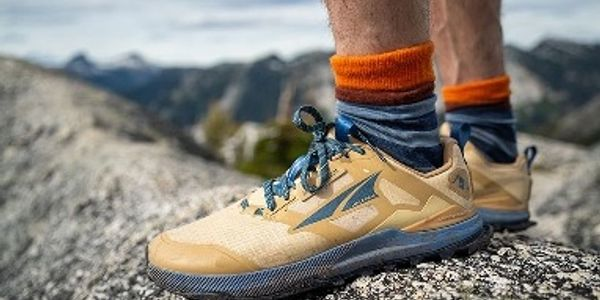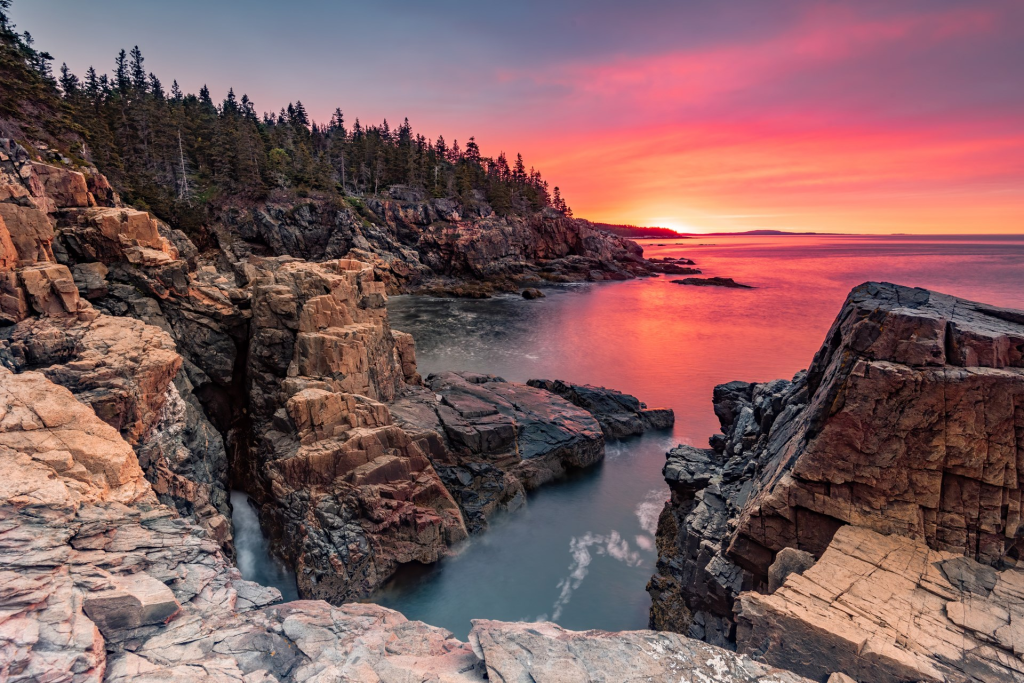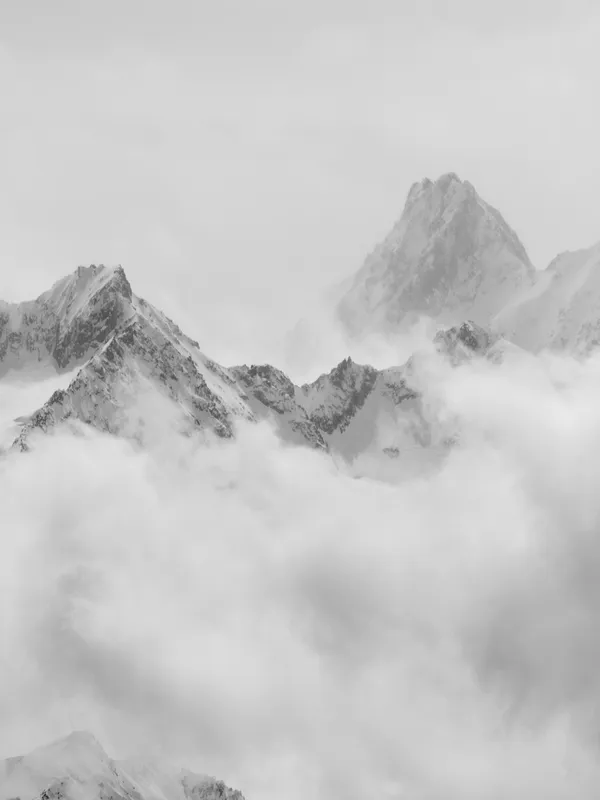My Ultimate Beginner’s Guide to Gear, Planning, and Your First Trip
By Cap Puckhaber, Reno, Nevada
I’ll never forget the first time I tried to plan a backpacking trip. I had been on plenty of day hikes, but the idea of spending the night carrying everything I needed to survive on my back felt like a different universe. I stared at gear lists that seemed a mile long and worried about everything from bears to getting lost. If you’re feeling that same pull of the mountains but are intimidated about where to start, I get it. I’ve been there.
My name is Cap Puckhaber, and I’ve spent over 20 years exploring the great outdoors. In that time, I’ve made just about every mistake you can make. I’ve packed laughably heavy gear, forgotten crucial items, and learned my lessons the hard way. The good news is, you don’t have to. Backpacking is an incredible way to disconnect and explore, and getting started is much easier than you think. I’m going to combine all my experience into one guide to help you get started with confidence, covering the right gear, smart planning, and the skills you need for a safe and memorable first adventure.
What Is Backpacking (And Why I Love It)
Before we get into the gear, let’s clear up a few basics. People often use hiking, backpacking, and camping interchangeably, but they are a bit different. Hiking is simply walking on trails, usually for a day or less. You carry a small daypack with water, snacks, and a rain jacket. Camping is the act of sleeping outdoors, often at a drive-in “car camping” site with a lot of comforts.
Backpacking is where these two worlds merge. It’s a multi-day hike where you carry everything you need to be self-sufficient—your food, your water filter, and your shelter—all in one big pack. It’s the key that unlocks the backcountry, letting you see places you simply can’t get to in a single day. For me, there’s no feeling in the world like waking up next to an alpine lake miles from the nearest road.
Start Small, Start Smart
The single best piece of advice I can give any beginner is to start small. Your first backpacking trip should not be a 50-mile trek through a remote wilderness. You’ll want to pick an easy, well-marked trail. Look for a one-night trip, maybe 3-5 miles in to a designated campsite. This lets you test your gear and your body without getting in over your head. Websites like AllTrails are fantastic for finding beginner-friendly routes and reading recent trip reports from other hikers.
My “Must-Have” Gear List for Your First Trip
When it comes to backpacking, your gear is your lifeline. It’s your home, your kitchen, and your closet, all stuffed into a single bag. The trend in 2024 and beyond has been toward “ultralight” gear, and for good reason. My first-ever pack was an external frame monster that probably weighed 10 pounds empty. I brought a full-size pillow and a hardback novel. My shoulders and back have never forgiven me for that trip. Every single ounce counts. That said, you don’t need to spend thousands on high-tech Dyneema fabrics for your first trip. You just need to be smart.
Alt text: A beginner’s backpacking gear list, including a backpack, tent, sleeping bag, and stove, all laid out on a floor.
The “Big Three”: Your Pack, Shelter, and Sleep System
Hikers call this the “Big Three” because they are almost always your heaviest and most expensive items. Getting these right is critical. For a beginner, a good-sized backpack is typically in the 50-70 liter range. This gives you enough room for your gear and food without being too massive. The most important part is the fit. I strongly recommend going to a store like REI and having a professional measure your torso and help you try on different packs. A pack that fits you correctly will distribute the weight to your hips, not your shoulders.
For your shelter, you’ll want a lightweight backpacking tent. A 3-season, 2-person tent is my recommendation even for solo hikers. That tiny bit of extra space is worth the weight for storing your pack and gear inside, especially if it rains. Make sure you practice setting it up in your backyard before you’re on a mountain in the dark.
Your sleep system consists of two parts: your sleeping bag and your sleeping pad. The sleeping bag’s temperature rating is key. For most 3-season hiking, a bag rated between 15°F and 30°F is a safe bet. You’ll see “down” and “synthetic” options. Down is lighter and more compressible, but it’s useless if it gets wet. Synthetic insulation is a bit heavier but will still keep you warm even if it’s damp, which is a great feature for beginners in unpredictable weather. Just as important is the sleeping pad. It does more than provide comfort; it insulates you from the cold ground. An insulated, inflatable pad is my preference for its comfort and small packed size.
Clothing: Your First Line of Defense
Here’s a critical mistake I see beginners make: wearing cotton. Cotton absorbs sweat and rain and takes forever to dry, which can be incredibly dangerous and lead to hypothermia. Your entire clothing system should be built on layering with “moisture-wicking” fabrics like merino wool or synthetics (polyester).
You need a base layer (long underwear) that wicks sweat, an insulating mid-layer (like a fleece or puffy jacket), and a waterproof outer layer (a rain jacket and rain pants). You’ll be adding and removing these layers all day to manage your temperature. I always pack an extra pair of wool socks. There is no better feeling than putting on a dry pair of socks at the end of a long day. And please, invest in proper hiking boots or trail runners. I once took a brand-new pair of stiff boots on a 15-mile hike. The blisters were legendary. Always break in your footwear on short day hikes first.
Kitchen & Hydration
Your backpacking kitchen can be very simple. All you really need is a small portable stove (like a Jetboil or MSR PocketRocket), a fuel canister, a small pot, and a long-handled spoon (a “spork”). This setup lets you boil water, which is all you need for coffee, oatmeal, and the amazing variety of freeze-dried meals available now. Backpacking food has come a long way. I used to live on trail mix and jerky, but now companies like Good To-Go and Backcountry Meals make gourmet-level dinners. A hot, delicious meal at the end of a hard day is a massive morale booster.
For hydration, you can’t carry all the water you’ll need. You must filter it. Never, ever drink directly from a stream or lake, no matter how clean it looks. I carry a lightweight squeeze filter like the Platypus QuickDraw or a purifier bottle like the Grayl Geopress. I also carry a few water purification tablets in my first-aid kit as a backup, just in case my filter breaks.
Navigation & Safety Gear
Your phone’s GPS is a great tool, but it should never be your only tool. Batteries die, screens break, and you often won’t have a signal. You must carry a physical, waterproof map of the area and a simple baseplate compass. More importantly, you need to know how to use them. Modern tech is a fantastic supplement, though. I use an app like Gaia GPS or AllTrails (with the Pro version) to download offline maps for my route, which I can check on my phone even in airplane mode.
You also need a basic first-aid kit. You can buy a pre-made one and add personal items like blister care (moleskin) and any medications you take. Finally, for any trip that’s remote or solo, I now carry a satellite communicator like a Garmin inReach or Bivystick. These devices let you send and receive texts without cell service and have an SOS button that can contact search and rescue. They are an incredible piece of mind for you and your family back home.
How to Plan Your First Backpacking Trip (Without Failing)

My 20+ years of experience are really just 20+ years of making mistakes and learning from them. A successful trip is all about smart planning. A poorly planned trip, on the other hand, can be miserable or even dangerous. Here are the most common failures I’ve seen—and how you can avoid them.
Researching Your Trail (And Actually Getting a Permit)
This is the big one. Many popular hiking destinations, especially in National Parks, require permits for overnight stays. I’ll be the first to admit I’ve driven three hours to a trailhead, full of excitement, only to be turned away by a ranger because I didn’t realize I needed an overnight permit. It’s a frustrating lesson you only learn once.
Your first step, before you buy any gear, is to research your destination. Check the official park website, like the U.S. National Park Service backcountry guide, to understand the rules. Some permit systems, like for Yosemite, are lottery-based and require you to apply months in advance. You also need to research the trail itself. Check its difficulty, elevation gain, and, crucially, the water sources. You need to know where you’ll be able to filter more water.
The Parking Nightmare: Don’t Get Turned Away
This sounds like a small detail, but it can end your trip before it starts. I’ve arrived at a popular trailhead at 10 AM on a Saturday only to find the lot completely full. Sometimes, lots are small or require a special parking permit (like a Northwest Forest Pass in the Pacific Northwest). Research the parking situation beforehand. Check recent trail reports on AllTrails to see what other hikers are saying. The simple answer? Arrive early. Very early.
Packing Smart: Avoiding the “Overpacked” vs. “Underpacked” Trap
There are two ways to fail at packing. The most common for beginners is overpacking. You bring too many “just in case” items, and your pack becomes a 50-pound monster of misery. Lay out all your gear. Ask yourself, “Does this item have at least two uses?” and “What is the real consequence if I don’t have this?” Be ruthless. Ditch the camp chair, the hatchet, and the hardback novel.
The other failure is underpacking, which is even more dangerous. This means forgetting an essential item like your rain jacket, your stove, your water filter, or even your tent stakes. I’ve seen it happen. The solution is simple: use a checklist. I still use one for every single trip. An excellent, comprehensive one is the backpacking checklist from REI Co-op. Go through it item by item as you pack your bag.
Telling Someone Your Plan
This is a non-negotiable safety rule. Always, always tell a friend or family member exactly where you are going. Your plan should include the trailhead name, your full itinerary (including where you plan to camp each night), and your “panic” time—the time you are expected to be back at your car. If they don’t hear from you by that time, they know to call for help. This is your single most important safety net.
Essential Skills You’ll Need on the Trail
Having the right gear is only half the battle. You also need to know what to do with it. These are the fundamental skills you’ll use on every trip.
How to Set Up Your Campsite
When you arrive at your camping area, your first priority is setting up your tent. Don’t wait until it’s dark or raining. Look for a safe, flat spot on a durable surface like dirt or packed-down grass. Avoid setting up in a low-lying “bowl” where water could pool if it rains. You also want to be aware of “widowmakers”—dead branches or trees that could fall in high winds.
Once your tent is up, organize your cooking area. Your kitchen should be set up at least 200 feet (about 70 big steps) downwind from your tent. This is to prevent cooking smells from attracting wildlife to where you sleep. Make sure you know and follow all local fire regulations. Honestly, I almost never make a campfire. A stove is faster, cleaner, and has far less impact.
Following Leave No Trace Principles
This is perhaps the most important skill you can learn. As backpackers, we are visitors in a wild place, and we have a responsibility to protect it. The Leave No Trace (LNT) framework gives us seven simple principles to follow. You can and should read all of them at the official Leave No Trace Center for Outdoor Ethics website, but the most important ones are:
- Plan Ahead and Prepare: This is everything we just discussed.
- Travel and Camp on Durable Surfaces: Stay on the main trail. Don’t cut switchbacks. Camp in existing, designated sites.
- Dispose of Waste Properly: This is simple. Pack it in, pack it out. This includes all your trash, food scraps, and even toilet paper. You’ll need to dig a “cathole” 6-8 inches deep and at least 200 feet from water for solid human waste.
- Respect Wildlife: Observe animals from a distance. Never, ever feed them. Secure your food and scented items (like toothpaste) in a bear canister or a proper bear hang, away from your tent.
Staying Safe and Handling Emergencies
The best way to handle an emergency is to be prepared for it. This means having your first-aid kit and knowing how to use it. It means watching the weather and being willing to turn back if a storm rolls in. Pace yourself. It’s not a race. Drink water before you feel thirsty and eat snacks often to keep your energy up.
If you do get lost, the most important thing to do is to stop, stay calm, and think. Don’t panic and run. This is where your map and compass—and the knowledge of how to use them—become critical. This is also where that satellite communicator I mentioned, like the Garmin inReach, becomes worth every penny.
Leveling Up: Trends & Tips from a Veteran Hiker
Once you have a few trips under your belt, you’ll start thinking about how to make your hikes more comfortable and efficient. The backpacking world is always evolving, and some of the trends from the last few years have made a huge difference in how I hike.
The Ultralight Mindset (And Why It Matters)
The ultralight backpacking trend isn’t just for extreme thru-hikers. It’s a mindset that benefits everyone and not about spending a fortune on gear made of Dyneema (though that stuff is amazing). It’s about questioning every single item you pack. The lighter your pack, the less your knees and back hurt. The less you’re exhausted at the end of the day, the more you can actually enjoy the incredible view you worked so hard to see. This mindset has changed everything for me. My pack weight is now half of what it was when I started.
Why I Switched to “Gourmet” Trail Food
As I mentioned, I used to be a “trail mix and energy bars” guy. But the boom in high-quality, lightweight, freeze-dried meals has been fantastic. After a 10-mile day with 3,000 feet of elevation gain, sitting down to a hot meal of Pad Thai or a “gourmet” curry from a brand like Good To-Go feels like magic. It’s a huge psychological boost that I now consider an essential part of my kit.
Using Social Media for Good (Reddit, Instagram)
Finally, social media has completely changed how we find inspiration and information. While platforms like Instagram and TikTok can sometimes lead to overcrowding at “Insta-famous” spots, they are also amazing for discovering hidden gems. I’ve found some of my favorite, lesser-known trails from other hikers I follow. Plus, communities on Reddit, like r/backpacking, are invaluable resources for super-specific gear reviews and trail tips from real people. It’s a great way to learn from the global community of hikers.
My Final Piece of Advice
If you’ve read this far, you’re no longer a total beginner. You have the knowledge. The only thing left to do is go. Hiking, camping, and backpacking can be challenging, but they are more rewarding than I can possibly describe. Preparation is the key that turns anxiety into anticipation.
You will make mistakes. You might forget your spoon or get a blister. It’s all part of the process. Be patient with yourself, take it slow, and savor the journey. Invest in a few pieces of quality gear, know the basics of safety, and always respect the environment. Your outdoor adventures will be highlights you’ll remember for the rest of your life.
If you’re looking for more real-world guides and honest advice from my 20+ years on the trail, be sure to check out my other posts right here on TheHikingAdventures.com.
Happy Trails, Cap Puckhaber
About the author
Cap Puckhaber is a marketing strategist, finance writer, and outdoor enthusiast. He writes across CapPuckhaber.com, TheHikingAdventures.com, SimpleFinanceBlog.com, and BlackDiamondMarketingSolutions.com. Follow him for honest, real-world advice backed by 20+ years of experience.
Backpacking Essentials Checklist For Beginners
Hiking Guide to Endurance and Smart Pacing
The Ultimate Beginner’s Guide to Thru-Hiking

Join our Mailing List
Sign up with us now and be the first one to know about our exclusive offers and product updates.
By submitting your information, you`re giving us permission to email you. You may unsubscribe at any time.
Follow Cap Puckhaber on Social Media


About the Author: Cap Puckhaber
Backpacker, Marketer, Investor, Blogger, Husband, Dog-Dad, Golfer, Snowboarder
Cap Puckhaber is a marketing strategist, finance writer, and outdoor enthusiast from Reno, Nevada. He writes across CapPuckhaber.com, TheHikingAdventures.com, SimpleFinanceBlog.com, and BlackDiamondMarketingSolutions.com.
Follow him for honest, real-world advice backed by 20+ years of experience.





